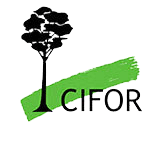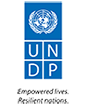
The Doability of Landscape Restoration
It can no longer be disputed; human influenced climate change is changing the course of life on our beautiful planet. An internet search on what the humans think the solutions to this environmental challenge are quickly reveals a call to global agreements that go beyond historic renewable energy investments.
But then, what is beyond; and the term restoration surfaces. If one is to define restoration; it is a planned practice of renewing and restoring degraded, damaged, or destroyed ecosystems and habitats in the environment through active human intervention, thus achieving ecological integrity and enhancing human well-being. The link between our environmental problems and their solutions is definitely us, and by us, I mean human beings. The fact that we can be and are involved on both sides of the equation can actually bring the balance and relevance to the saying “send a thief to catch a thief”.
Humanity has always been involved in restoring landscapes, however it is the realisation that this environmental practice can be an important lever in mitigating climate change that has seen global aspirations such as the Bonn Challenge take flight. In an article by Peter Besseau on the art of the do- able, it is clear that it can be easy to be intimidated by such initiatives and focus on the vastness of areas that are tabled for restoration.
To quote, “But, if we look at those numbers as the sum total of what dozens of countries and millions of people can do in the places they live, then the whole enterprise seems much more manageable—and that’s because it is. Global landscape restoration happens as many, many deliberate interventions on thousands of landscapes across the world based upon the energies, talents, and resources of us all”. So if we get over our doubt and fear of risk taking and acknowledge that, we can do it, what are at least the prerequisites that can direct us towards success.
I think first it is important to debunk some of the myths about restoration. An article by the World Resources Institute , identified three main myths, which are;
(i) Restoration is not striving to get back to the former structure of the landscapes. In most cases it is not desirable both for the ecosystem and the social construct of the landscape, instead it focuses on restoring functionality.
(ii) Restoration is all about planting trees. That’s not true either. Being a forester myself I would definitely say yes to that and champion that myth. Unfortunately I can’t. Restoration is about creating ecological, social and economic benefits and trees might sometimes not be a part of it.
(iii) Doing nothing will not cost us anywhere. Well it actually does. Having the problems associated with degraded landscapes such as soil erosion will cost us billions in food aid due to famines.
Realising that you can do it, debunking any myths about what it is that one wants to do, can be topped up by looking at three factors reported by Craig Banson and Stewart Maginnis as necessary for any restoration project. They give examples from Costa Rica and South Korea forest restoration projects. These factors are;
(i) The need for a clear motivation. Decision makers, citizens and landowners should be clear on what they want to achieve whether it is maximum water yield or curbing soils erosion
(ii) Enabling conditions such as ecological conditions that are suitable for the restoration project should be in place. Another example is the alignment of policies affecting restoration projects, for example in South Africa, tree planting of introduced species requires a water use license and if a restoration project is to recommend a particular exotic species for use in a restoration project without acknowledging this policy hedge then that would already be setting up the project for failure
(iii) The need for implementation capacity and resources cannot be overstated, and, while many often bring it to the fore as a barrier to restoration, it is worth noting that finding resources for a well-planned project according to other factors mentioned above is much easier and DOABLE.
Tatenda Mapeto is one of the 10 young champions who will work on the “ Landscape restoration” challenge with Youth program’s partner: WLE (CGIAR).
Learn more about the Global Landscapes Forum’s Youth program, meet our 50 youth champions and discover the 5 Landscapes challenges they will take up, in December, in Paris.





































